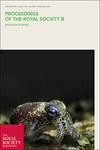视觉饮食对颜色辨别和偏好的影响
IF 3.8
1区 生物学
Q1 BIOLOGY
Proceedings of the Royal Society B: Biological Sciences
Pub Date : 2024-09-18
DOI:10.1098/rspb.2024.0909
引用次数: 0
摘要
视觉环境的低级统计规律在多大程度上影响了我们的感知?我们利用参与者在日常生活中佩戴的校准头戴式摄像机,对生活在偏远热带雨林和城市环境中的人们的色度 "视觉饮食 "进行了描述。所有环境的色度分布都以蓝黄为轴,差异最大,但不同地点的偏差程度不同。如果色彩感知是根据参与者所处的视觉环境进行校准的,那么场景统计偏差程度的变化就会对感知判断产生相应的影响。为了验证这一点,我们测量了生活在不同环境中的人的色彩辨别力和对色彩分布的偏好。颜色辨别中蓝黄偏差程度的群体差异与当地环境中的知觉学习是一致的。对色彩分布的偏好与场景统计相一致,但与当地环境并不特别相关,其中一个群体偏好沿着与自然场景中主要色彩轴正交的非自然色彩轴分布。我们的研究表明,在偏远地区对人们进行心理物理学研究有利于了解人类感知的共性和多样性。本文章由计算机程序翻译,如有差异,请以英文原文为准。
Effects of visual diet on colour discrimination and preference.
To what extent is perception shaped by low-level statistical regularities of our visual environments and on what time scales? We characterized the chromatic 'visual diets' of people living in remote rainforest and urban environments, using calibrated head-mounted cameras worn by participants as they went about their daily lives. All environments had chromatic distributions with the most variance along a blue-yellow axis, but the extent of this bias differed across locations. If colour perception is calibrated to the visual environments in which participants are immersed, variation in the extent of the bias in scene statistics should have a corresponding impact on perceptual judgements. To test this, we measured colour discrimination and preferences for distributions of colour for people living in different environments. Group differences in the extent of blue-yellow bias in colour discrimination were consistent with perceptual learning in local environments. Preferences for colour distributions aligned with scene statistics, but not specifically to local environments, and one group preferred distributions along an unnatural colour axis orthogonal to that dominant in natural scenes. Our study shows the benefits of conducting psychophysics with people at remote locations for understanding the commonalities and diversity in human perception.
求助全文
通过发布文献求助,成功后即可免费获取论文全文。
去求助
来源期刊
CiteScore
7.90
自引率
4.30%
发文量
502
审稿时长
1 months
期刊介绍:
Proceedings B is the Royal Society’s flagship biological research journal, accepting original articles and reviews of outstanding scientific importance and broad general interest. The main criteria for acceptance are that a study is novel, and has general significance to biologists. Articles published cover a wide range of areas within the biological sciences, many have relevance to organisms and the environments in which they live. The scope includes, but is not limited to, ecology, evolution, behavior, health and disease epidemiology, neuroscience and cognition, behavioral genetics, development, biomechanics, paleontology, comparative biology, molecular ecology and evolution, and global change biology.

 求助内容:
求助内容: 应助结果提醒方式:
应助结果提醒方式:


